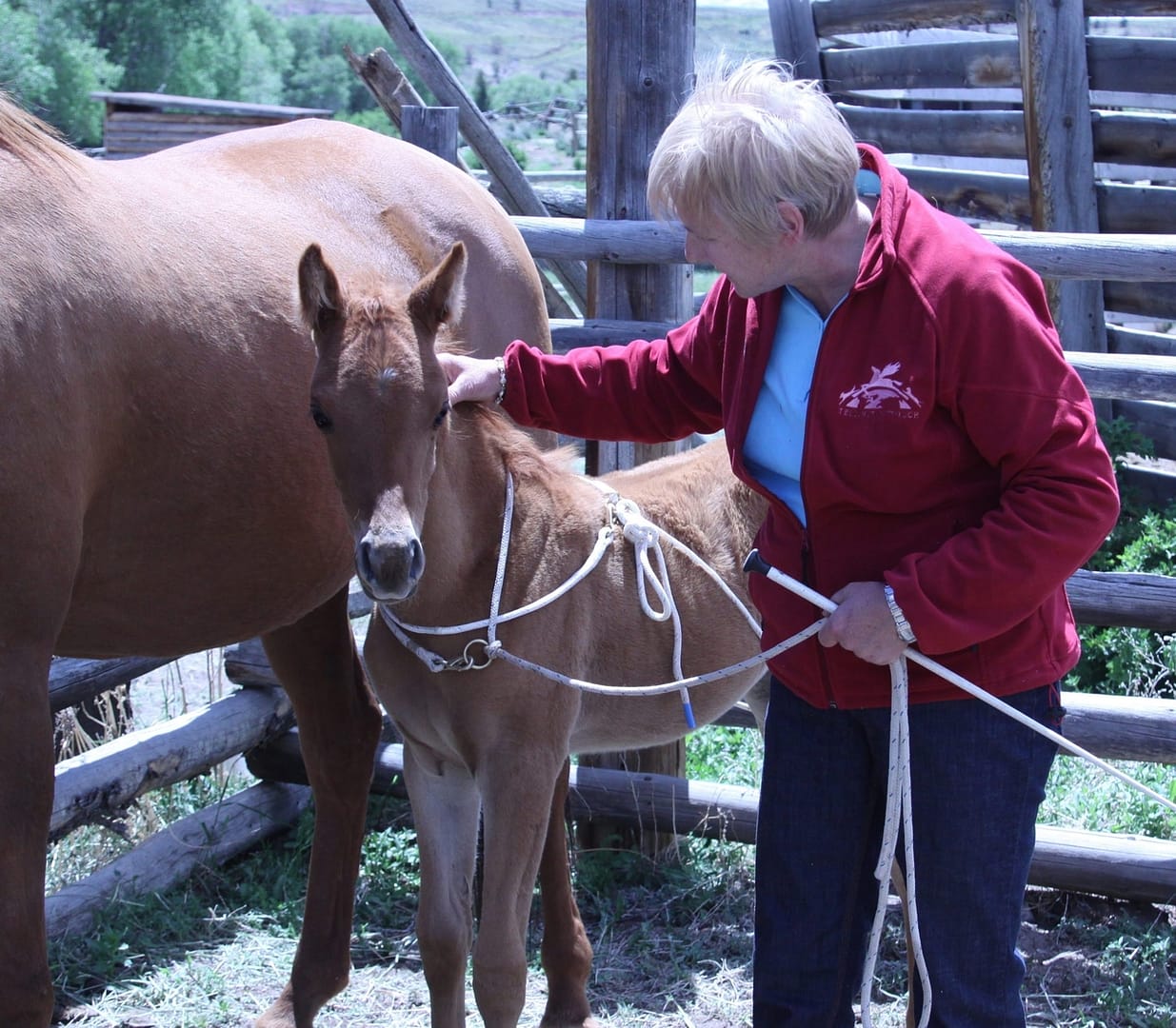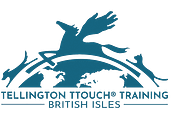Horses
People often wonder what TTouch for Horses is all about:
Is it Natural Horsemanship? – not really since we don’t use the premise of escalating pressure or assume horses will respond to us like another horse to teach horses what we want.
Is it bodywork? – non-invasive, non-habitual bodywork is just one part of a whole horse method.
Is it energy work? – while many use conscious intention, the techniques work effectively in their own right.
The Tellington TTouch Method for horses offers a training approach that encourages optimal performance and well-being. Based on the understanding that behavioural issues are often caused by pain, soreness, fear or tension in the body, TTouch addresses these underlying issues through a combination of Body Work, specific Ground Exercises and Riding With Awareness along with an overarching respect and consideration for the horse.
Tellington TTouch goes beyond just what you do with your horse and how you do it. It changes how you believe in your horse and understand them at a deeper level, beyond behaviour and labels. This low-stress, logical method of dealing with horses seeks to take horses beyond the reflex of instinct and educate horses how to think and act rather than re-act to stimuli.
Attitude & Philosophy
One of the most important pieces that you will walk away with from a workshop is this tenant: “Change your mind, change your animal”. What is meant by this is how much our perception and labels affect how we deal with a specific animal or behaviour. We look at behaviour as a means of communication rather than as the personality of a horse and work to find the root cause of behaviour, because there is always a reason!
The Tellington TTouch Method looks at the connection between physical, mental, and emotional balance and uses the variety of exercises to improve posture and balance, which helps a horse feel safer, so they can be more self-confident. When an animal is self-confident they have better self-control and emotional balance. This self-control enables them to make better choices, acting rather than reacting. This means that the Tellington TTouch Method is not simply “training” a horse to do a specific behaviour, but actually providing them with the education to adapt, cooperatively to different situations.
Observation & Awareness
Sometimes combined with the heading “Attitude & Philosophy”, observation has been a key piece to the Method since its inception. As a way to understand behaviour, we use our powers of observation, visually and with our hands to become “detectives” and work to understand underlying issues of behaviour from habitual patterns of tension and dysfunctional posture or limitations due to injury or loss of function.
This is not meant to label or judge the animal, it simply provides feedback to what is being observed in that context and at that moment of time. Observation is not limited to our animals but is used for ourselves as well as a road to self-awareness.
Body Work
Tellington TTouch Practitioners use a light touch exploration to find areas in a horse’s body that indicate tension, fear of contact, soreness or discomfort.
Specific touches and movements known as TTouches are then applied to the horse’s body and can release muscle tension, ease discomfort and improve posture which leads to better mobility and performance.
Many techniques may resemble massage but the intention is not to directly manipulate the muscular-skeletal system. TTouch works with the nervous system to change physical patterns at some of the deepest levels through gentle, non-habitual movement. Many aspects of these techniques were inspired by the Feldenkrais Method.

Ground Exercises
Ground Exercises enable a horse to override habitual patterns of posture and movement and to learn without fear or force.
Changing postural patterns through movement helps retain the effectiveness of bodywork as well as change behavioural patterns associated with pain or tension. Tellington TTouch exercises in the “Playground for Higher Learning” using a variety of elements (including labyrinth, ground poles and surfaces) results in improved self-control, focus, self-confidence, cooperation, balance and coordination. Moreover, many unique ways of leading a horse provide opportunities for both horse and rider to increase ability and coordination which can then be transferred to work under saddle.
Tellington TTouch groundwork is not done quickly or with the idea that you will “tire a horse out”, “make the right thing easy and the wrong thing hard” or “show the horse who’s boss”. TTouch groundwork helps horses find coordination and balance which enhances self-confidence and makes it easier for horses to do what we ask of them.
Riding with Awareness

The Joy of Riding combines Linda’s more than 60 years of teaching classical riding and experience as a Feldenkrais practitioner. Riding with Awareness increases the comfort, performance and confidence of horse and rider by using unique tools and exercises to improve balance, posture, communication, and overall way of going.
TTouch Equipment
Many different pieces of equipment are used to help enhance a horse’s balance and overall body awareness. These different types of equipment are used for groundwork and riding exercises to support and encourage a functional posture and healthy way of going – without force or restraint.
One of these tools are our “Body Wraps”. Contrary to many people’s first thought, these are in no way restrictive or tight. They do not force the body into any position, rather they remind the nervous system about where it is in space and appear to “reset” or at least reveal habitual patterns of tension and bracing.
Starting Young Horses
The components of the Tellington TTouch Method (Bodywork, Groundwork, and Riding with Awareness) can be used to quietly educate young horses from their first interactions with people to schooling under saddle in a way that encourages confidence, cooperation and awareness without jeopardising the safety of horse and handler and effectively teaching young horses to be ridden in a low-stress and comprehensive way.
Horses often demonstrate marked improvement in athletic skills and increased willingness and ability to perform. Not only does the horse benefit, but also a deeper rapport grows between horse and rider because of better understanding and more effective communication.
Who uses TTouch for Horses?
The Tellington TTouch Method is used by many world-renowned trainers and riders.
The list includes:
- Klaus Balkenhol – Olympic Dressage Rider
- Frederic Pignon – Founder of Cavalia
- Ann Kurskinski – US Show Jumper
- Ingrid Klimke – Olympic 3 Day Event Rider
- Becky Hart – World Champion Endurance Rider
These are just few of the many high calibre equestrians who have worked with Linda and appreciate the Tellington TTouch Method.
Of course, anyone who shares their life with animals can use the Tellington TTouch Method!

What is covered in a TTouch Training for Horses?
- Philosophy and principles of the Tellington TTouch Method, as developed by Linda Tellington-Jones.
- Physiology of stress and the relationship to behavior.
- Observational skill building: posture, balance, conformation, gait, and interaction with the environment using objectivity.
- Skill building in the techniques of TTouch bodywork.
- Use of the equipment.
- Skill building in the Tellington TTouch Method of leading and groundwork.
- Application of the Tellington TTouch Method to specific behaviour issues.
- Skills, exercises, and equipment used in Riding with Awareness.
- Introduction to problem solving and investigating external factors attributing to low performance (i.e. saddle fit, dental issues, physical issues, handler error).
